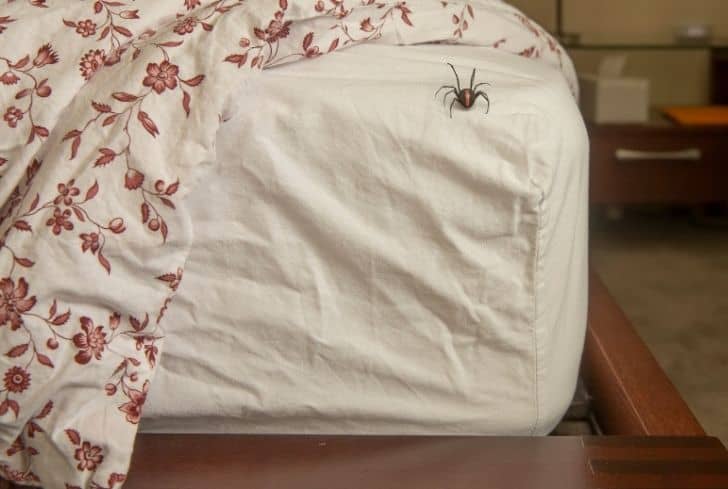

Having a baby can be one of the most rewarding times of your life but it is also the most exhausting. Those late-night feedings and constant diaper changes can take up a lot of your time and energy. That’s why so many parents absolutely love nap time. Those naps give you some time to get some household chores done, plus they allow you time to nap when needed. Unfortunately, some babies don’t nap as long as you’d like, leaving parents to wonder how to get a baby to nap longer.
Well, there are a few things you can do to increase your little one’s naptime. First, take a look at the recommended nap lengths and frequency for your baby’s age, then make a few alterations in their schedule and nap area to help encourage longer sleep times and a more relaxing break for you.

Newborns are unpredictable and so are their nap schedules. In fact, they are usually only awake for an hour or less at a time, which is enough time to feed and change them before they fall asleep again. They should have 4 or 5 naps each day, ranging from 15 minutes to 3 hours, depending on how tired your little one is.
By the 2-3 month stage, babies sleep longer at night but still need frequent naps during the day. Napping 4 times a day for about 30 minutes to 3 hours is normal at this stage, fitting in a nap in the morning, 2 in the afternoon, and 1 in the evening.
At this stage, babies should sleep only for about 90 minutes during a nap, so you can get them on a more stable schedule. Having 3 naps a day, with 1 in the morning and 2 in the afternoon, each of which should last about 90 minutes, is best. Depending on what time they wake up, you can also add an evening nap if needed, though this should be early enough not to alter their bedtime.
At this point in development, your baby should be sleeping through the night, so you can reduce the daytime naps. They should nap twice a day for 1.5 to 2 hours, with a catnap in the evening if needed, though this depends on how active they are during the day.
At this stage, your baby is the most active, so you need to maintain a rigid schedule to maintain the proper sleep schedule. Taking 2 naps a day, once in the morning and once in the afternoon for up to 3 hours, is normal, plus they should sleep through the night, which means a better rest for you.
| Baby’s Age | Number of Naps per Day | Duration of Naps | Overall Sleep per 24 Hours |
| 0-6 weeks | 4 to 5 naps | 15 mins to 3 hours | 16 to 20 hours |
| 2-3 months | 4 naps | 30 mins to 3 hours | 15 to 17 hours |
| 3-6 months | 3 to 4 naps | 90 mins | 15 to 17 hours |
| 6-9 months | 2 to 3 naps | 1.5 to 2 hours | 14 to 15 hours |
| 9-14 months | 2 naps | Up to 3 hours | 10 to 12 hours |
The sleep cycle for a baby is about 30-50 minutes but it is possible for them to sleep beyond this, getting 2 or 3 sleep cycles in before waking up for good. If you’re trying to get a baby to nap longer than 30 minutes, there are a few things you can try out.
There are signs when your baby is ready to sleep. They don’t want to play, they start slumping in their seat, they stop making eye contact, their eyes glaze over, and they get cranky. If you don’t see these signs, it will be a fight to get them to sleep, so watch for them and get ready to whisk your little one off to bed when the time has come.
Regulating your child’s sleep patterns is also a must. This means watching the clock until you can see how long it takes for your child to tire out between naps. Once you have the timing right, you can get them to nap at the same time each day to help build a sleep pattern for them. As they age, the pattern will change, so keep track of those milestones.
A comfortable sleep area is also a must. Buy a quality crib mattress, as well as a decent mattress for a Pack N’ Play, to give your baby the best possible place to sleep. Though babies can’t use just any pillow, a soft baby pillow designed for comfort and proper head shaping is also a good option. The OCCObaby Baby Head Shaping Memory Foam Pillow is highly recommended because it is made of high-quality hypoallergenic and breathable materials that are safe and keep your baby cool and comfy.
Hunger can wake your baby from a nap at any age, especially during those growth cycles where they seem to eat constantly. Feeding your baby a snack 15 to 30 minutes before naptime is the best way to prevent this.
Cartoons and other kid’s shows can keep little minds active, so it is best to avoid turning on devices before their naps. Eliminating screen time before sleep will help them relax for a more restful and lengthy sleep.
Sunlight and other bright lights will prevent sleep but complete darkness can disorient a baby during the sleep/wake transition. A dimly lit room is best, with closed curtains or blinds and a nightlight to maintain the right balance for a synchronized circadian rhythm.
 Don’t opt for total silence
Don’t opt for total silenceAnother way to get baby to nap longer is to maintain the right sound balance. Loud noises can wake your baby but complete silence can train them to only sleep when there is no noise at all. Light background noise in other areas of your home can help with this balance, so your child gets used to some sound while trying to sleep.
If the noise is too much for your little one, you can try to drown it out using a white noise machine in your baby’s bedroom. These also have the added benefit of mimicking the sound a baby hears in the womb for a more familiar environment to sleep in. Users love the Skip Hop Baby Sound Machine, which includes white noise nature sounds, soft lullabies, a star and moon ceiling projection, and a night light belly to give your baby everything needed for a restful nap.
There are a few benefits to proper napping. Sleep helps to promote proper growth and tissue repair, plus it helps little ones learn new things and retain that knowledge, especially when napping right after the new information is added.
There are also behavioral issues that are associated with sleep, so if your child is having meltdowns over the smallest issue, they could be sleep-deprived and in need of longer and more restful naps. This also gives them the ability to adjust to new environments, challenges, and stimuli each day, with the right amount of mental energy to handle these changes.
Even if you have the perfect sleep area set up, you could still be having issues with getting your baby to nap longer. The following issues could come up, so knowing the solution to your problems is a must for happy babies and parents.
There are times when you miss the window for napping. You could be away from home or just get busy and miss the cues your child is showing you to tell you they are tired. This leads to an overtired child, which makes it harder to put them to sleep since they are now agitated and difficult to settle.
What to do: When your baby is overtired, there are a few solutions to get them to sleep. Try swaddling to keep their extremities tucked close to their body and give them the comfort and security needed to calm down. Avoid eye contact to reduce stimulation. Take them to a quiet area, rock them, and use a pacifier if needed.
To avoid an overtired baby in the future, maintain a sleep schedule and watch for those sleepy cues, like yawning, fussiness, or rubbing areas like the eyes, ears, or head.
Going down for a nap late can mess up naptimes throughout the day, putting your little one behind their nap schedule. This can also make it more difficult to get them to bed that night, which will affect your routine the next day as well.
What to do: To avoid any unwanted disruptions in your nap schedule, set up a routine that is followed closely throughout the day. This doesn’t just include naptime, it also includes mealtimes and outings to the park, grocery store, or anywhere else you need to go. If needed, hang a schedule up in your home for everyone to follow. You can also add alerts on your phone or other devices to let you know exactly when each activity needs to be started and finished. This will help maintain your schedule to keep your baby sleeping at the right times.
There are times when your baby is going to nap in a stroller or car seat, which is fine on occasion. Doing so regularly can affect the quality and length of their sleep, though, so if the conditions are not ideal, you’ll be dealing with a cranky baby that won’t nap properly.
What to do: Napping in car seats and strollers once in a while is fine but you may want to try avoiding this whenever possible. Don’t take your baby out of the house too close to nap time to ensure they are sleeping in their crib or bassinet as often as possible. Make sure their room is comfortable, with a soft mattress, blackout shades, soft lighting, and a white noise machine to block out any loud background noise that can’t be turned off.

What to do: To break the overtired cycle, there are a few things you can do. The first is to ensure your baby’s awake cycles are not too long and make sure they are sleeping more at night. This may require some assisted naps, which means that you need to hold or wear your baby during the length of their nap to help them sleep for longer periods. Sitting in a rocking chair or standing are ideal positions, ensuring that your baby’s airways are open so they are not struggling to breathe. Do not do an assisted nap when you are tired to prevent falling asleep with your baby in your arms.
Assisted naps are a temporary solution to break the overtired cycle, so don’t feel as though you need to hold your baby for every nap for the rest of their lives. Once the overtired cycle is broken and your baby is sleeping for the proper length of time, you can start putting them in their crib or bassinet again at their scheduled naptime.
Babies can be unpredictable at times, especially for new parents. Your sleep is disrupted, you’re dealing with dirty diapers, and it seems like your life is turned upside down when that tiny little person comes home. Learning how to get a baby to nap longer is the first step to setting a healthy routine.
Of course, it seems like as soon as you’ve adjusted to your new schedule, your baby hits a new milestone and the old routine needs to be altered to fit your baby’s age. That’s why it is important to learn what you’re baby needs for each age and adjust their routine at those times until they are ready to leave the naps behind them. The right sleeping environment is also a must to lengthen their naps and give you a much-needed break throughout the day, so make the necessary adjustments as soon as you can.





